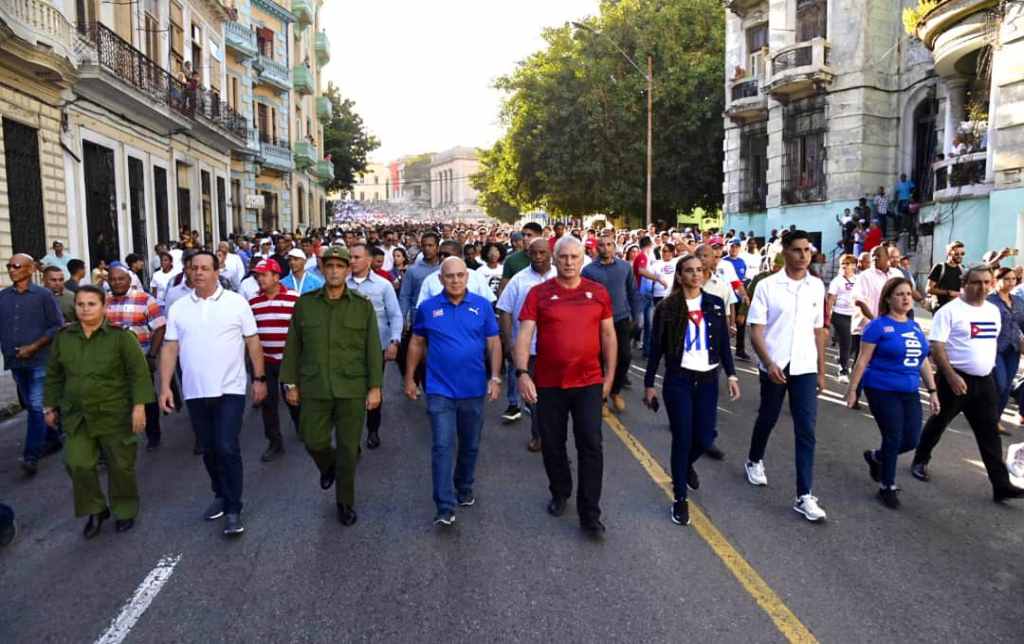Díaz-Canel was at the vanguard of the pilgrimage that thousands of students make from the steps of the University of Havana to the monument that reminds the vile assasassinations in this capital.
On November 23, 1871, a group of first-year medical students were waiting for their professor in the anatomical amphitheater next to the Espada Cemetery, in Havana.
According to historical research, they dispersed through the cemetery, some rode around on the wheelbarrow there, another plucked a flower and the rest played among themselves. Later, Spanish authorities accused them without proof of desecrating the grave of Spanish journalist Gonzalo Castañón.
This event occurred amid a tense historic context due to the increasing defeats of the Spanish Army at the hands of the leaders of the war of independence who had been fighting them since 1868 in eastern Cuba.
In the first court martial, the innocence of the young men was demonstrated; however, due to the pressure of the Spanish Volunteer Corps in Havana, the young men were sentenced to death in a second trial as a warning.
In order to complete the list with eight students, three of them were chosen in a draw that included a 17-year-old student from the city of Matanzas who was not in Havana on the day of the alleged desecration.
On November 27, all eight students were executed by firing squad, another group was sentenced to prison and then were exiled.
jg/jha/raj









